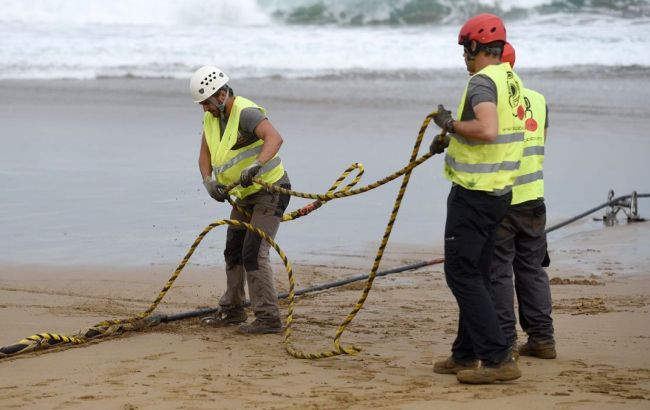Finnish police suspect anchor damage to power cable in Baltic Sea
 Photo: Police suspect that the damage was caused by the Eagle S (Getty Images)
Photo: Police suspect that the damage was caused by the Eagle S (Getty Images)
Finnish police have discovered traces on the bottom of the Baltic Sea stretching for dozens of kilometers. It is believed that a tanker, which was carrying Russian oil, severed a power line and four telecommunications cables with its anchor, reports Reuters.
On Wednesday, December 25, it was revealed that the 658-megawatt (MW) underwater electricity cable Estlink 2, connecting Finland and Estonia, had been damaged. Currently, only the 358-megawatt Estlink 1 remains between the two countries. According to energy system operators, Estlink 2 may not be operational until August 2025.
The day after the incident, Finnish police and coast guard officials boarded the vessel Eagle S, registered in the Cook Islands. The ship then headed into Finnish waters, where the crew of the detained tanker was interrogated.
Police suspect that the damage was caused by this particular ship, which dragged its anchor along the seafloor. Investigators found a "dragging track" but have not yet located the missing anchor. According to Sami Paila, tactical leader and detective chief inspector of Finland's National Bureau of Investigation, the trace stretches for dozens of kilometers.
Photographs of Eagle S, taken on Friday, show that the vessel is missing its anchor on the port side.
Finland's Customs Service believes that this ship is part of a shadow fleet of outdated tankers used to bypass sanctions on Russian oil exports.
On Friday, the Kremlin stated that Finland's seizure of the ship did not cause significant concern in Moscow. Russia also denied involvement in any previous incidents that led to damage to infrastructure in the Baltic states.
According to Yle, Finland's interception of the Russian shadow tanker prevented several more serious sabotage attempts. Had the ship not been stopped, it could have continued damaging underwater communications.

